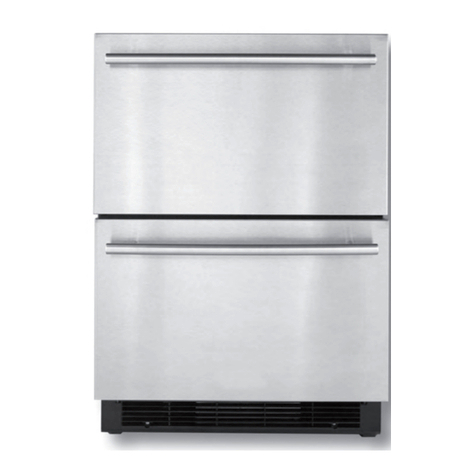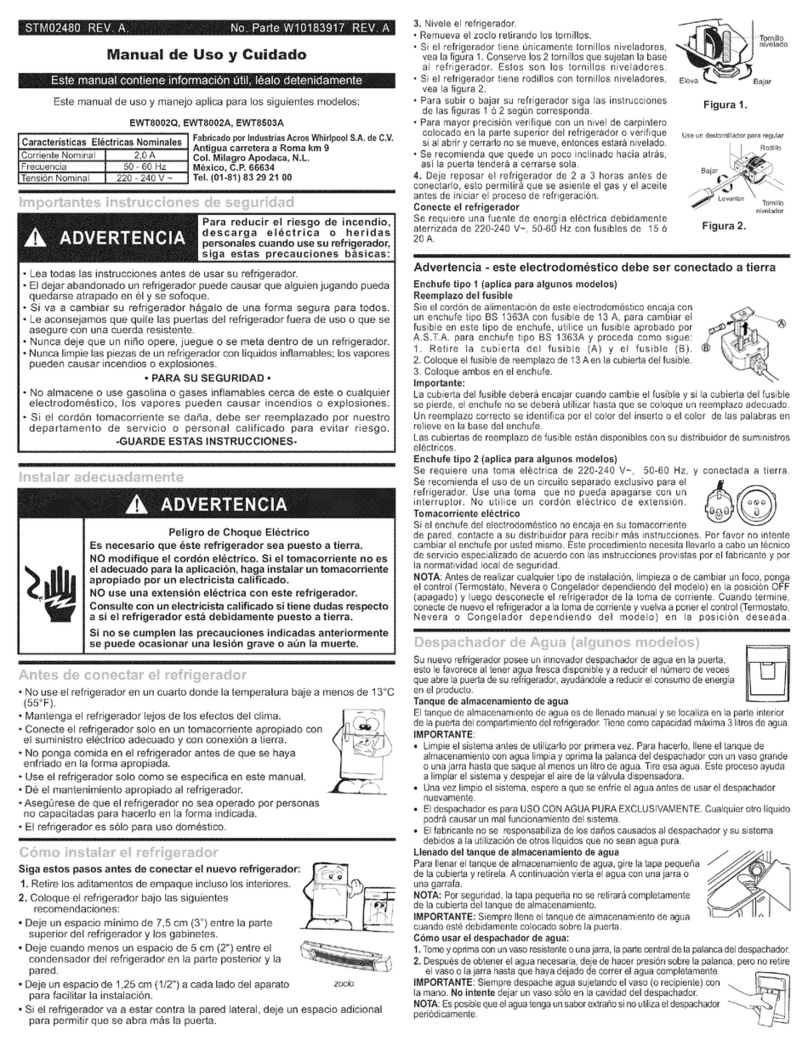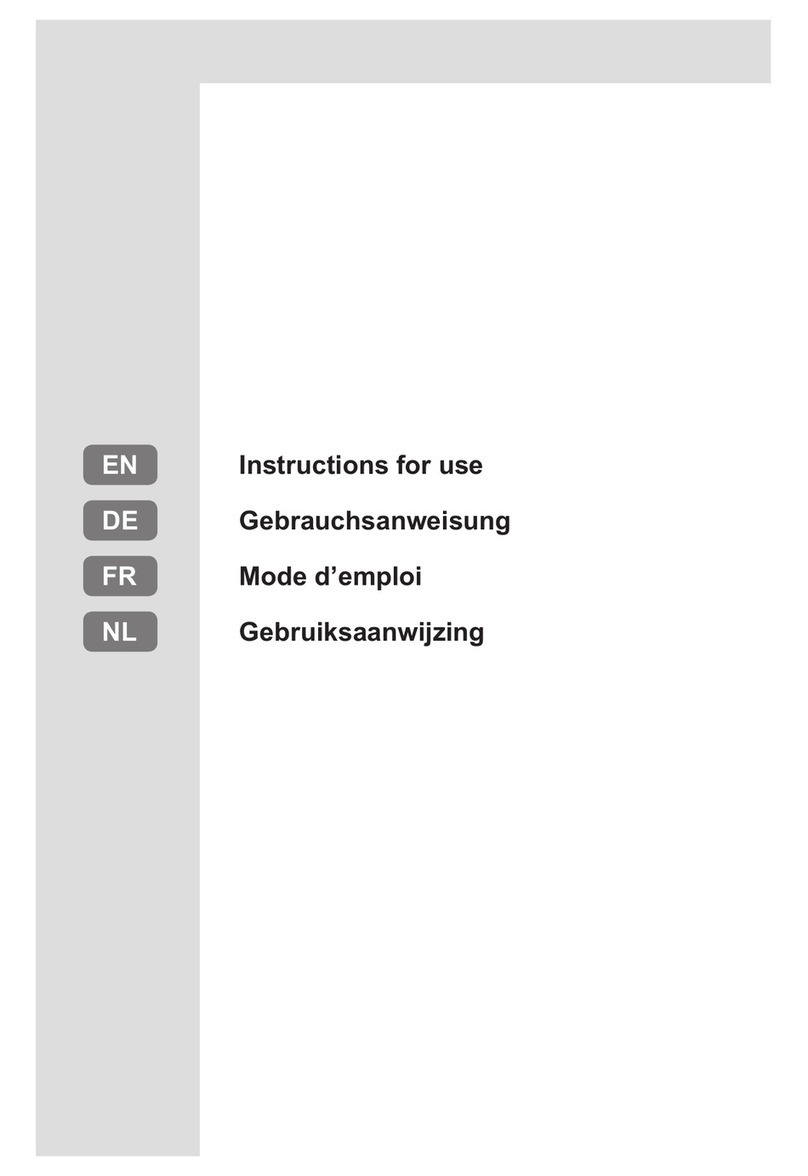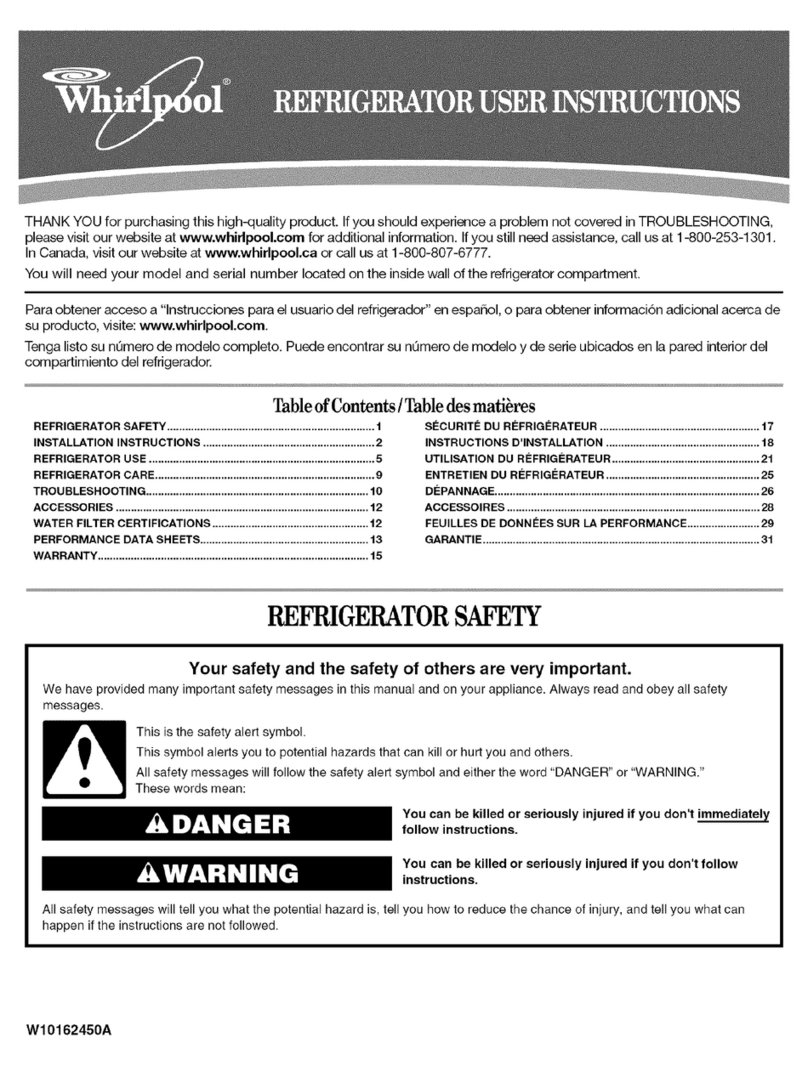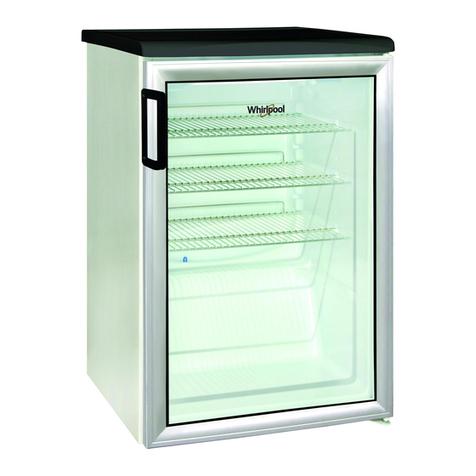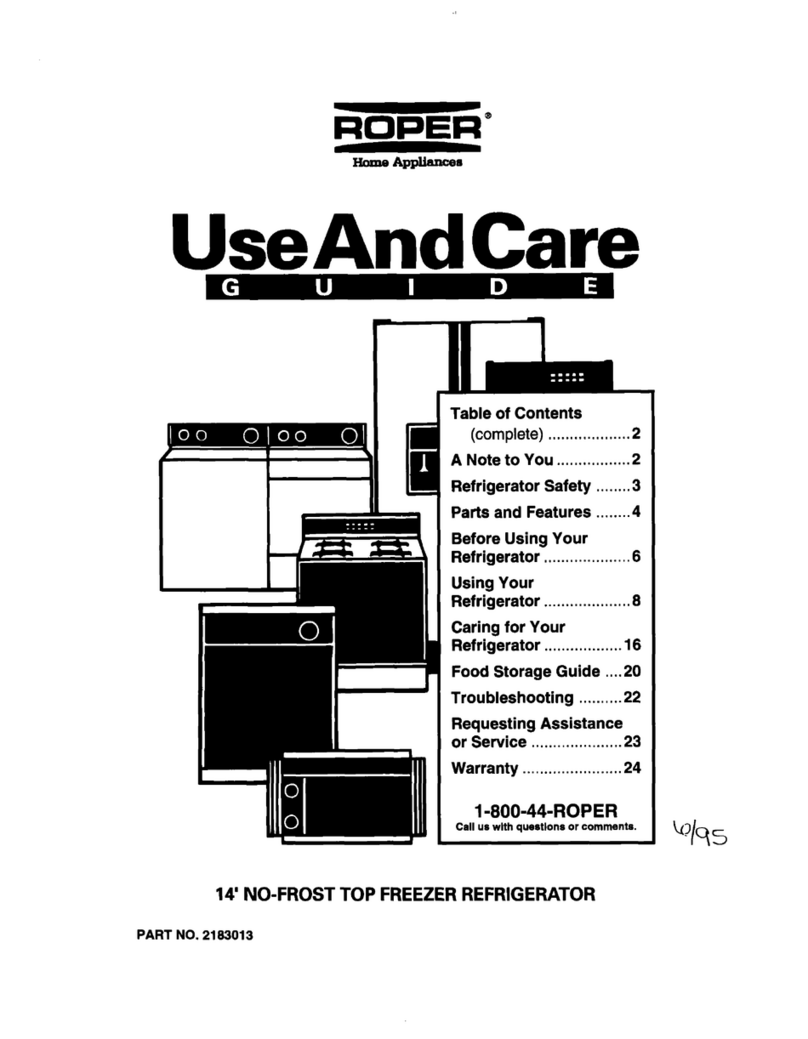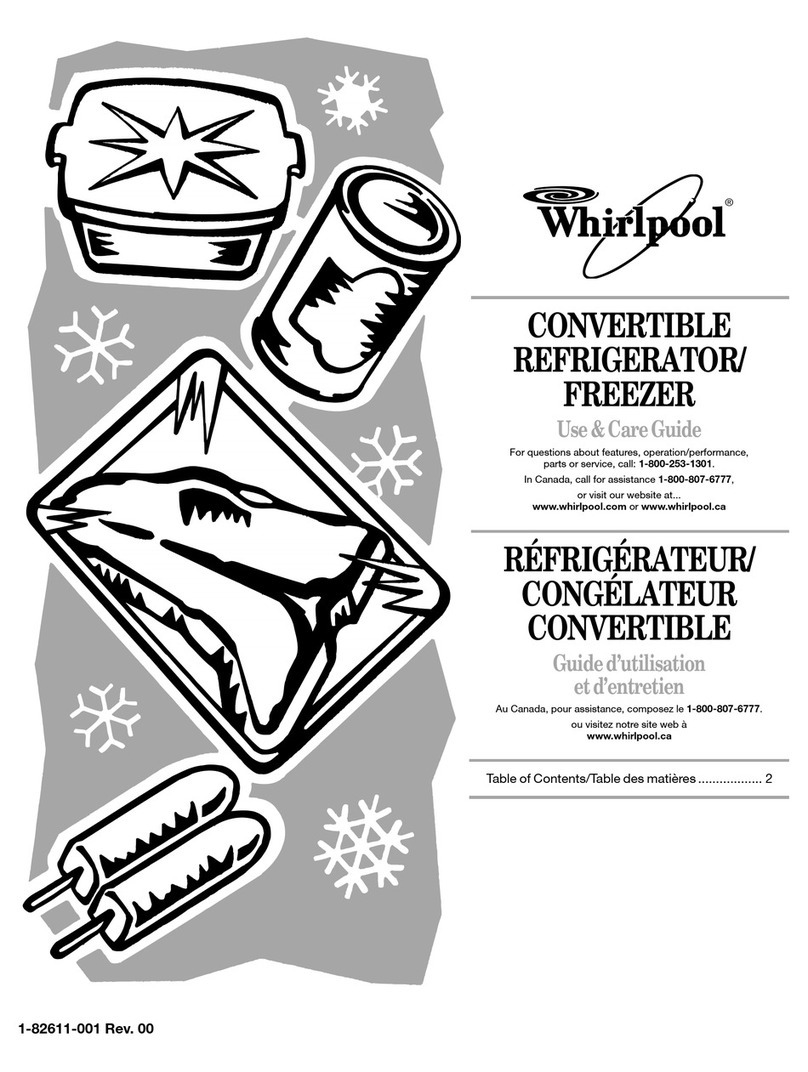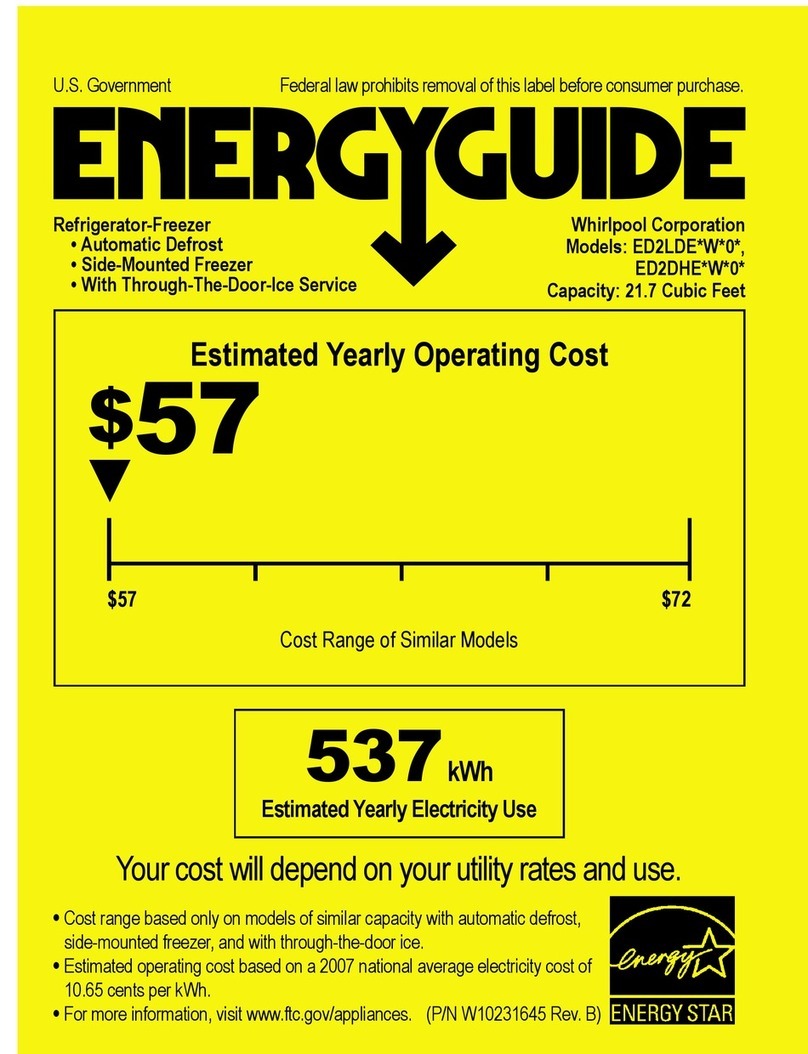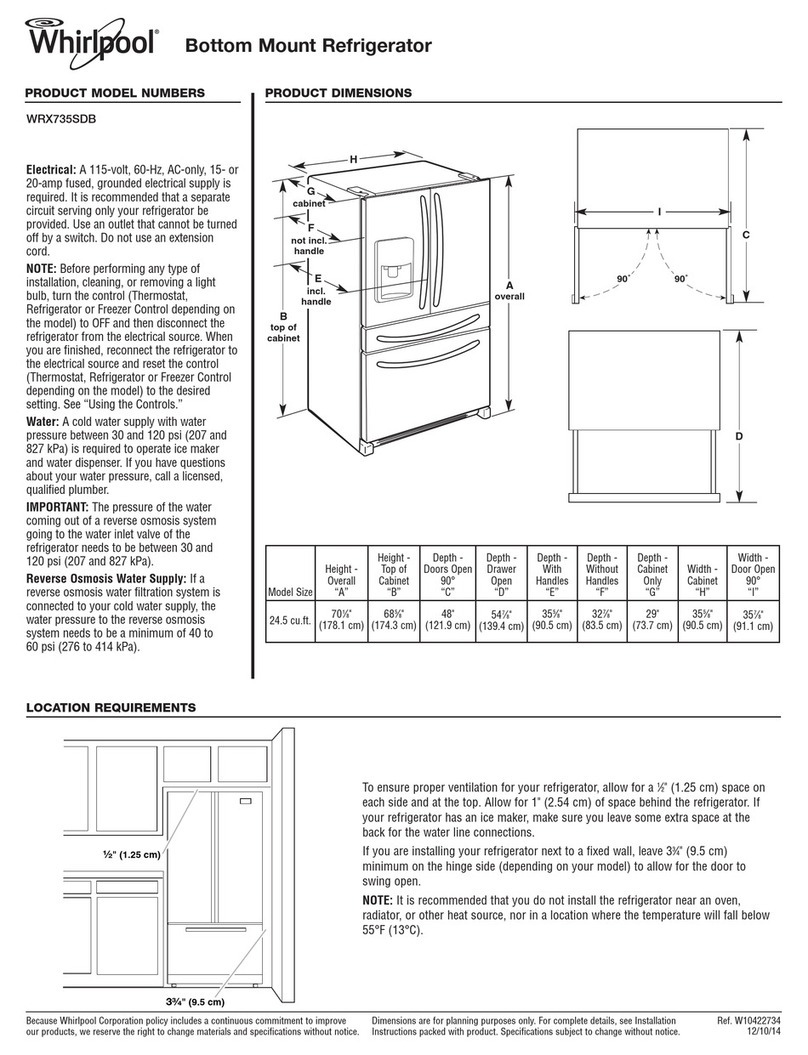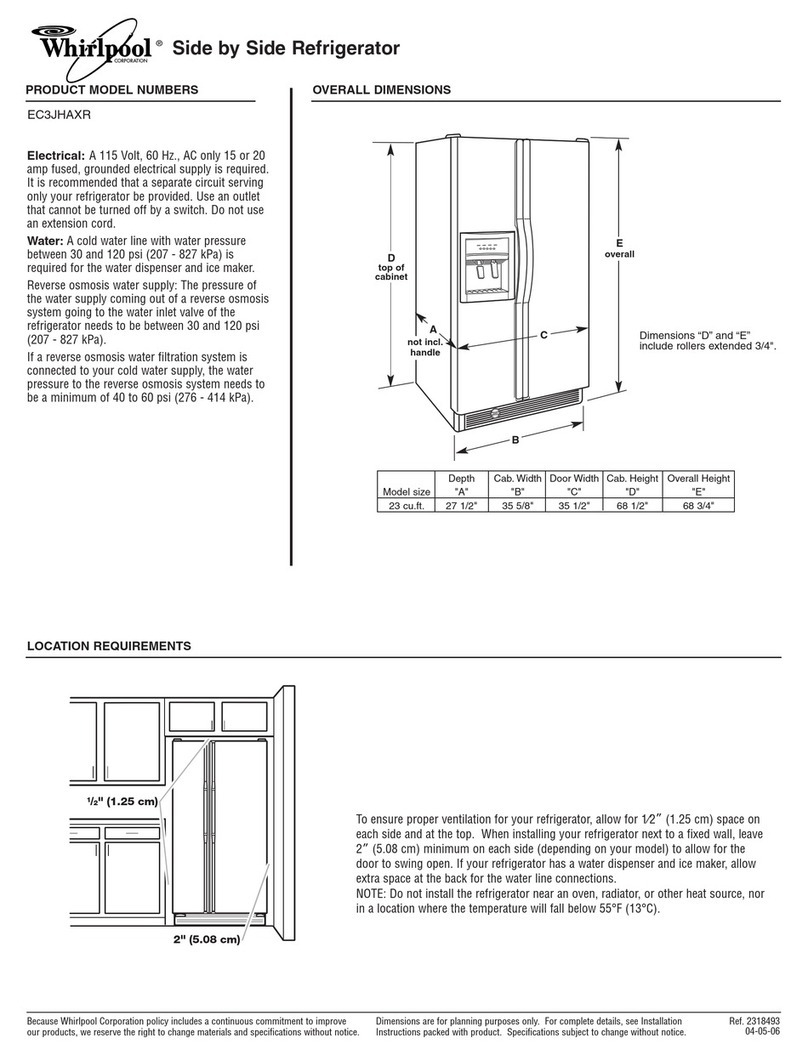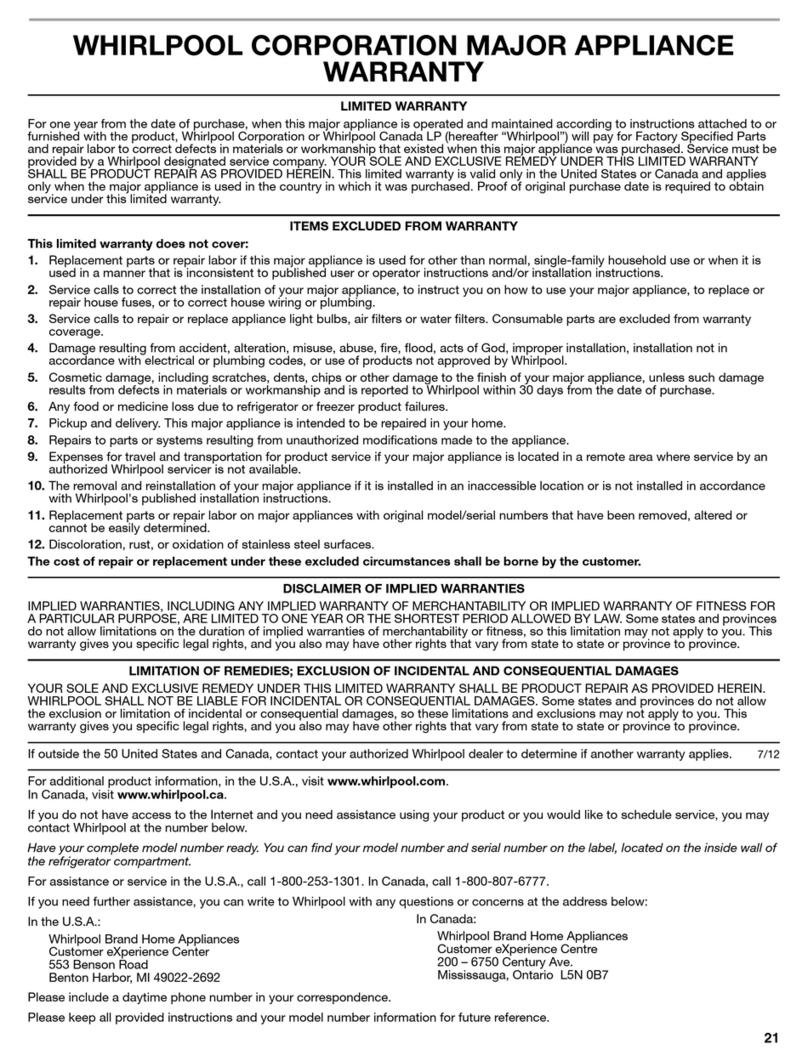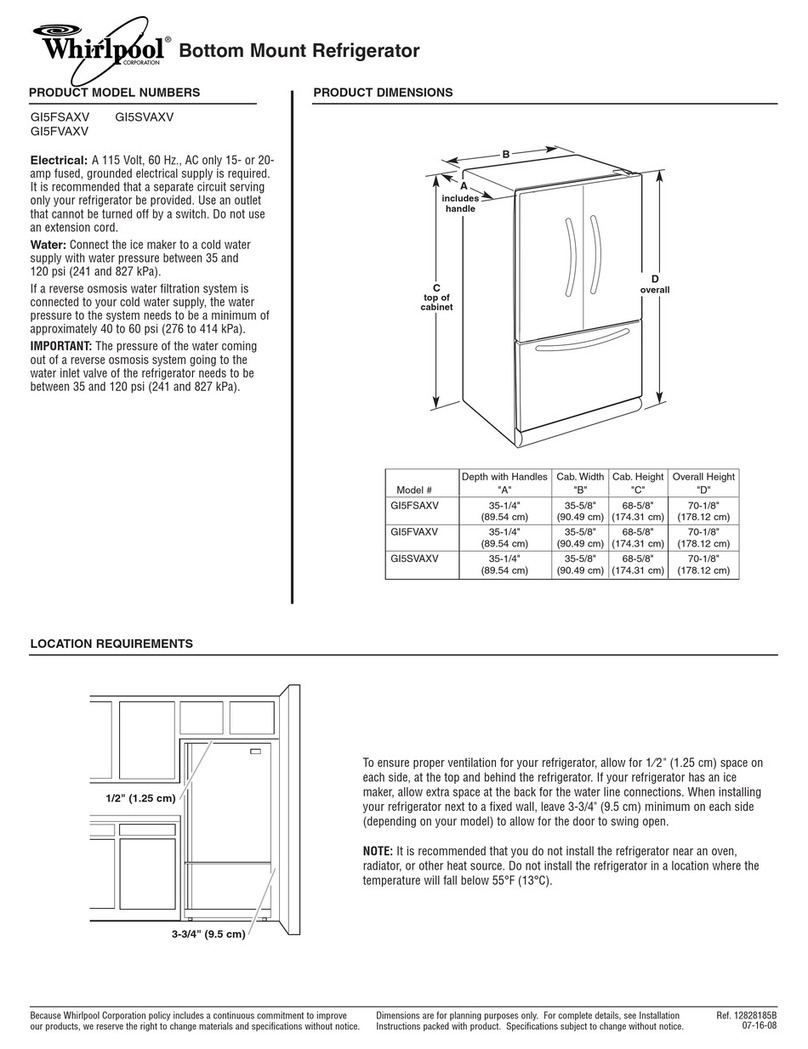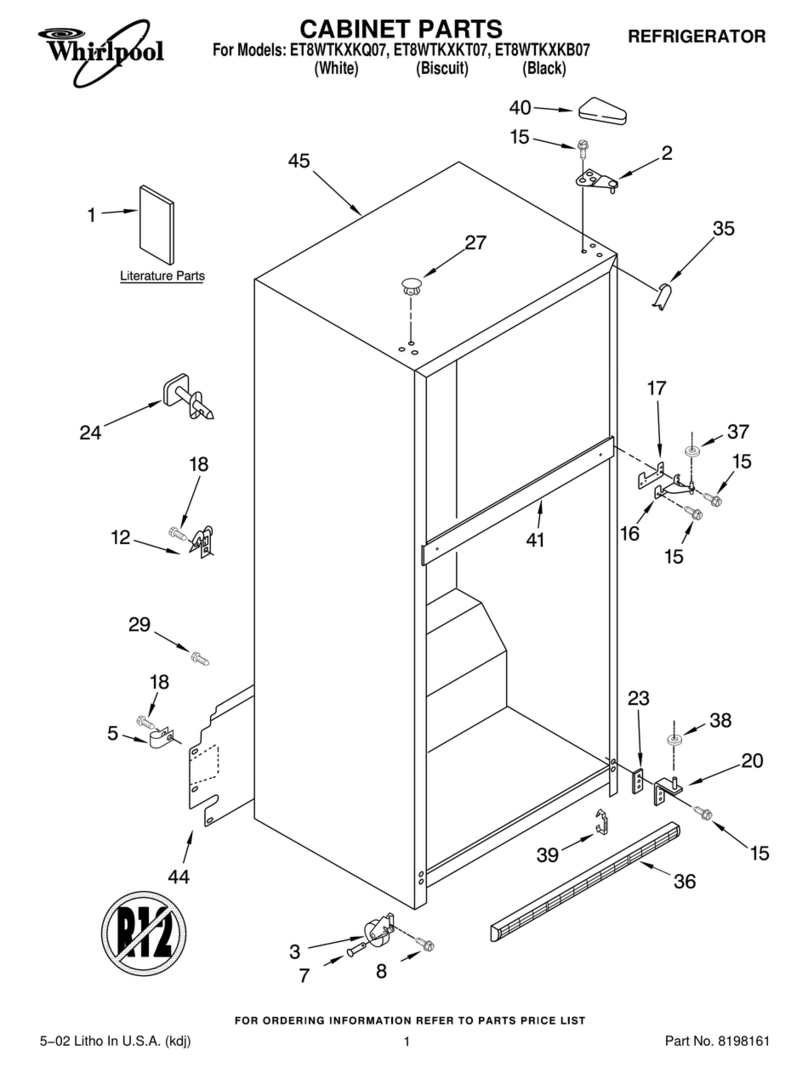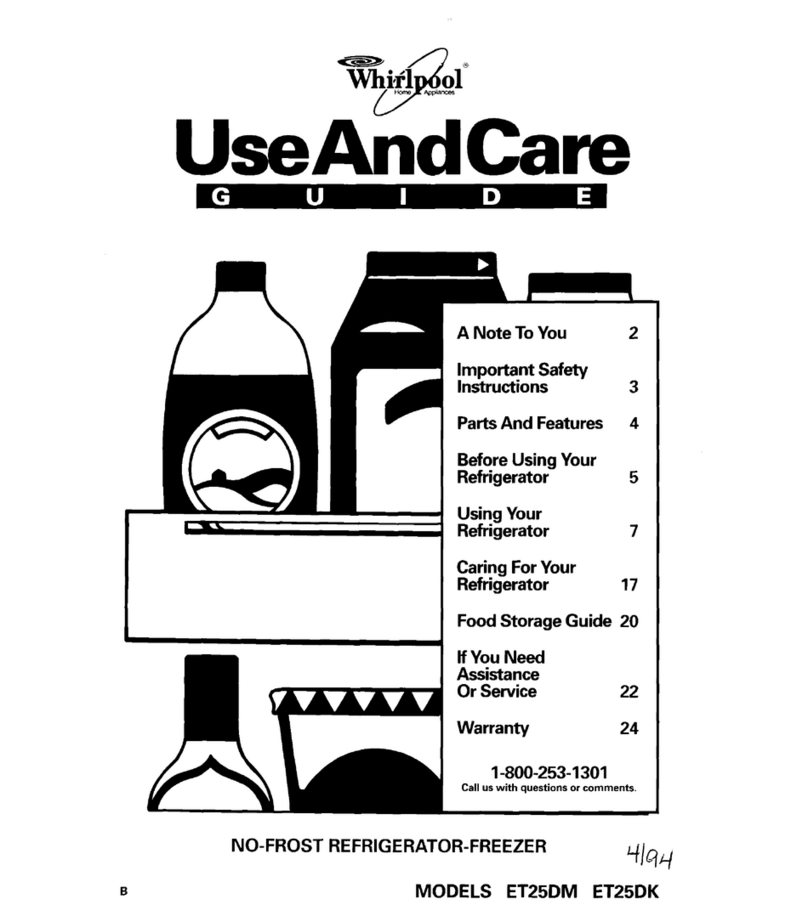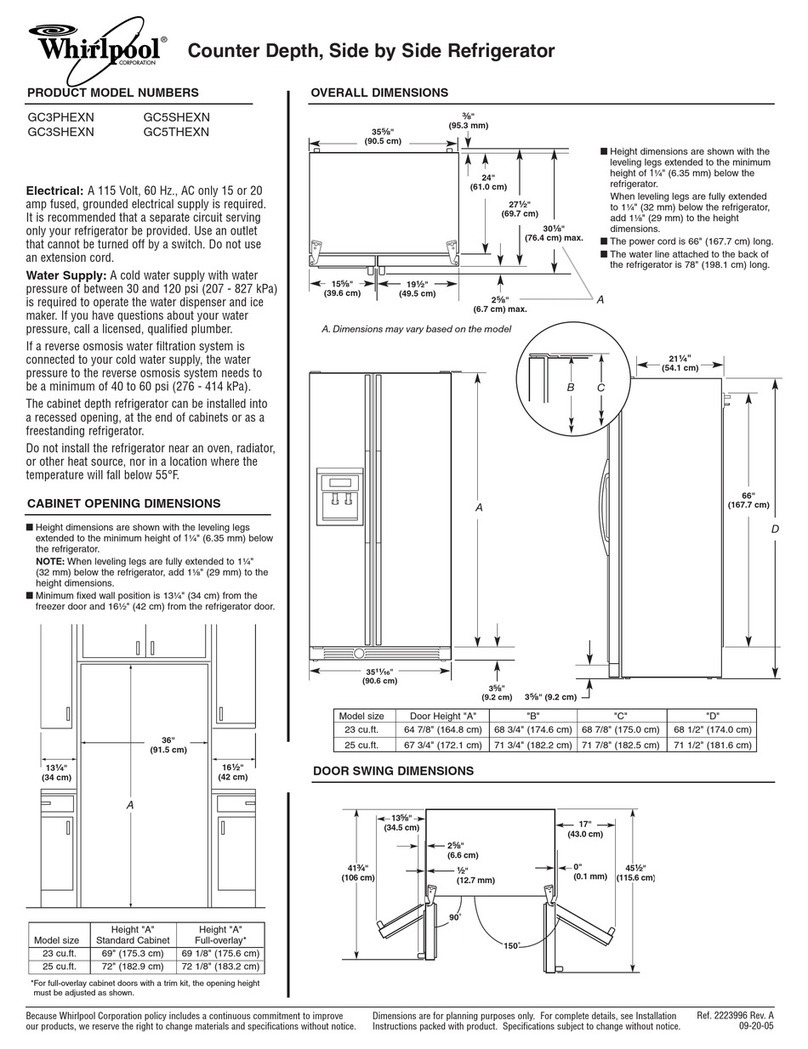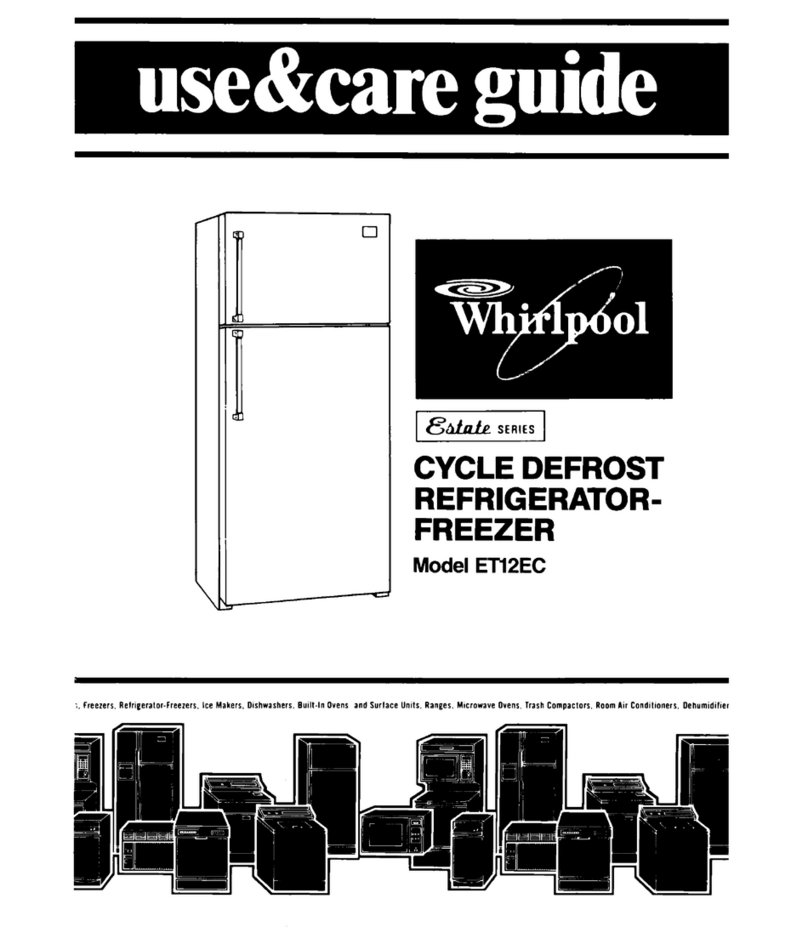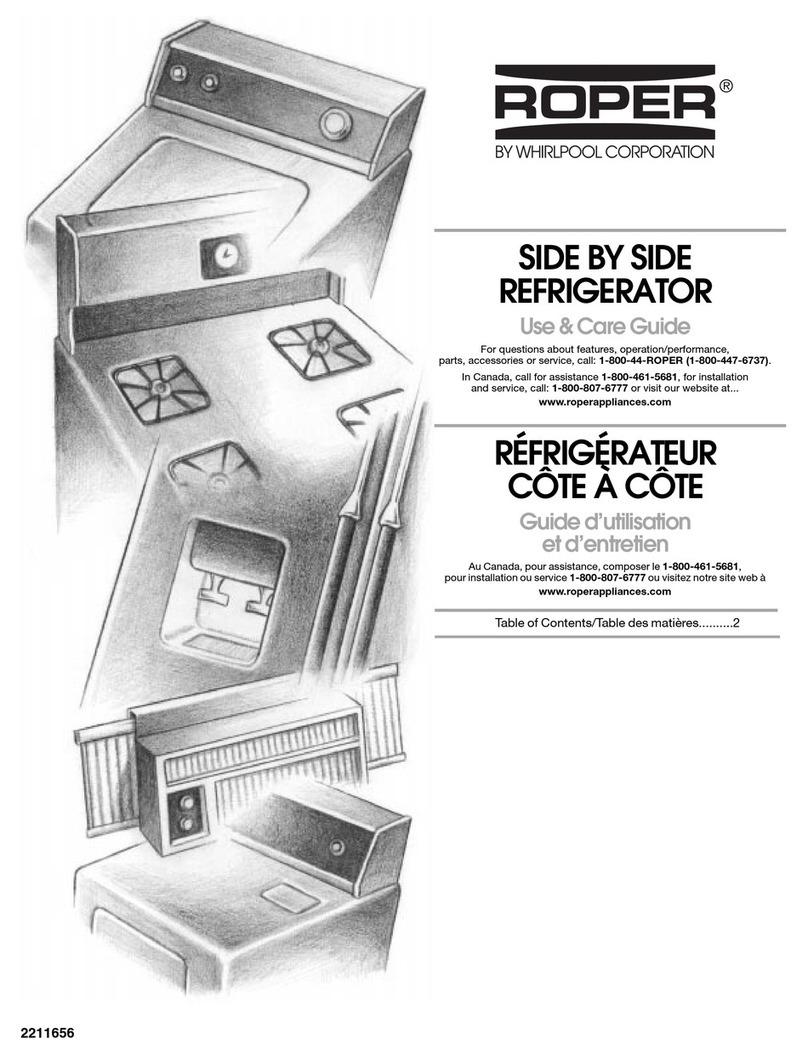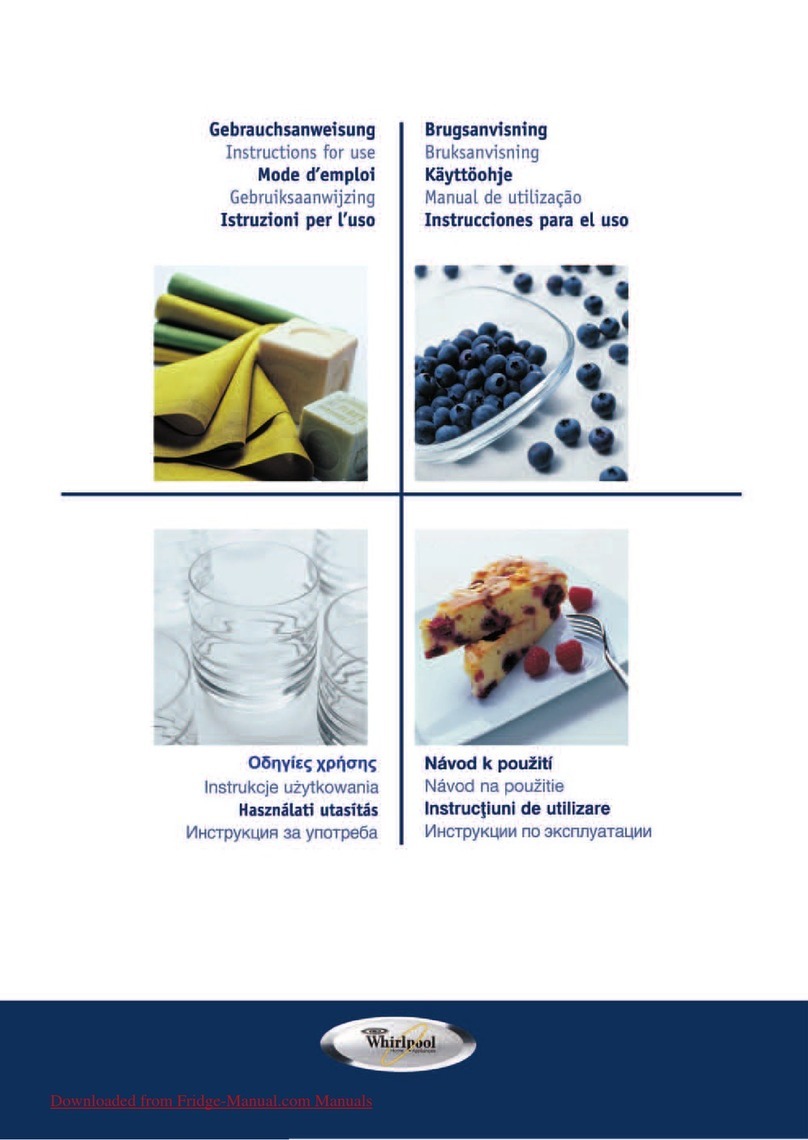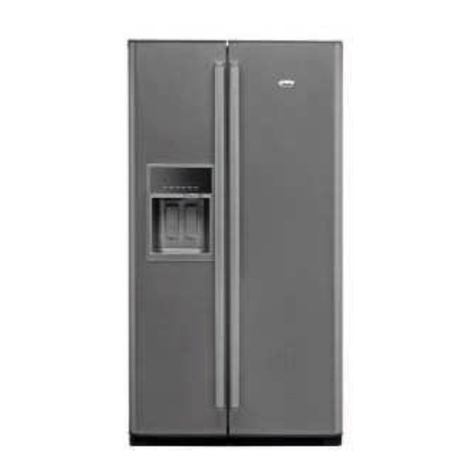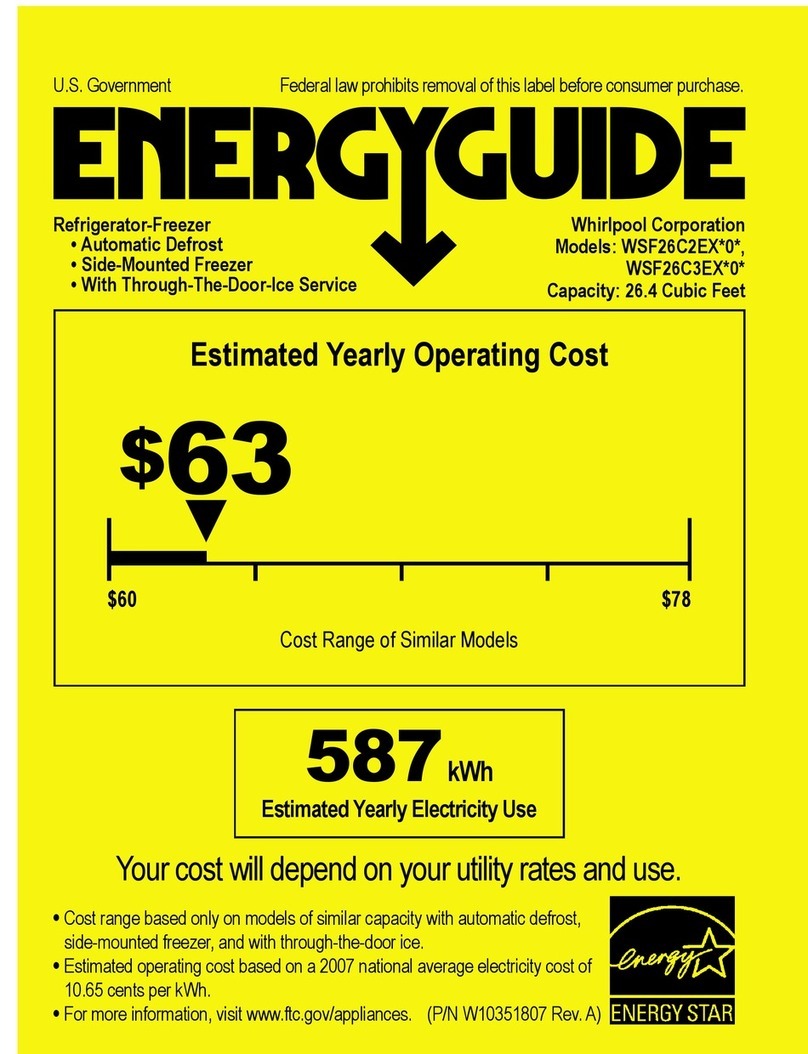English
DAIRY PRODUCTS
Butter
Margarine
Ice cream, fruit juices, milk
Cheese
6 to 9 months
12 months
2 months
Camembert, mozzarella, farmers 3 months
Creamed cottage (do not freeze)
Brie, emmenthal, suisse, etc. 6 to 8 weeks
(Freezing can change texture of cheese)
EGGS
Whole (mixed), white, yolks 12 months
(Add sugar or salt to yolks or whole mixed eggs)
BAKED FOODS
Yeast breads and rolls 3 months
Unbaked breads 1 month
Croissants 3 months
Cakes, unfrosted 2 to 4 months
Cakes, frosted 8 to 12 months
Fruit cakes 12 months
Cookie dough 3 months
Pie dough only 4 to 6 months
The low temperature compartment maintains the storage
temperature for 11 hours even in case of power failure:
during this time we suggest to leave the door of the com-
partment closed.
- Do not refreeze partially thawn foods.
- The ice maker will not operate until the low temperature
compartment is cold enough to make ice. This can take
overnight.
- Because of new plumbing connections, the first ice may
be off flavoured. Discard the first few batches of ice.
- If ice is not being made fast enough and more ice is needed,
turn the Refrigerator Control toward a higher number.
- If you remove the ice bin, raise the signal arm to shut off the
ice maker. When you return the bin, push it all the way in and
lower the arm to the ON position.
- If cubes are stored too long, they may develop an off-fla-
vor... like stale water. Throw them away. They will be repla-
ced. Cubes in the ice bin can also become smaller by eva-
poration.
- Good water quality is important for good ice quality.
Water softener chemicals such as salt, can damage the ice
maker mold and lead to poor quality ice. If a softener water
supply cannot be avoided, then it is important that the wa-
ter softener be well maintened and operating properly.
MAINTENANCE AND CLEANING
A periodic and proper maintenance will ensure a longer life
to your appliance.
When carrying out cleaning operations, always disconnect
the appliance from the mains supply.
Periodically clean the refrigerator and freezer compartments
with a sponge dampened in a solution of lukewarm water
and vinegar. Rinse and dry carefully. Never use detergents
or abrasives.
THAWING
Here are some basic suggestions:
Raw vegetables: do not thaw, put straight into boiling wa-
ter and cook as usual.
Meat (large cuts): thaw in the refrigerator compartment
without unwrapping them. Before cooking leave at room
temperature for some hours, or defrost in a microwave
oven following the manufacturer’s recommendations.
(small cuts): thaw at room temperature or cook directly.
Fish: thaw in the refrigerator compartment without unwrap-
ping or cook directly before being completely thawed.
Previously cooked foods: re-heat in the oven without re-
moving from its aluminium container.
Fruit: thaw in the refrigerator compartment.
NOTE: Do not store liquids in glass containers in the low
temperature compartment.
Clean the outside with a sponge dampened in lukewarm
water. Dry with a soft cloth.
Periodically clean the condenser (Fig. 10) with a vacuum-
cleaner.
Periodically clean the defrost pan (without removing it) (Fig.
10) situated on the compressor.
Attention
The refrigeration system tubes are located near the defrost
pan and can become hot.
VACATIONS
Short vacations
PRODUCTION OF ICE CUBES
There is no need to disconnect the refrigerator from the
mains supply if you will be away for less than two weeks.
Use up perishable food, freeze other items.
1. Turn off your ice maker.
2. Shut off the water supply to the ice maker.
3. Empty the ice bin.
Fill the trays 3/4 of their depth and place them in the low
temperature compartment.
Attention: Do not eat ice cubes or ice lollies immediately
after their removal from the freezer as they may give rise to
“cold” burns.
Do not store liquids in glass containers.
Long vacations
Remove all the food if you are going away for more than a
month. Turn off the water supply to the ice maker at least a
day before. When the last load of ice drops, turn off the ice
maker. Make sure all the ice cubes are dispensed out of the
mechanism. Unplug the refrigerator and clean it... rinse well
and dry. Leave the doors open far enough for the air to get
in. This will keep odour and mold from building up.
AUTOMATIC ICE MAKER (OPTIONAL)
The automatic ice maker (Fig. 9) can be obtained by our
Service Centres.
Here are some suggestions to operate it:
- The ON/OFF lever is a wire signal arm.
Down . for making ice automatically.
Up ...to shut off the ice maker on until it is connected to the
water supply. Please refer to the separate instructions sup-
plied.
ENERGY SAVING TIPS
You can help your refrigerator to use less electricity:
- Check the door gaskets. Level the appliance to be sure of a
good seal.
- Clean the condenser regularly.
- Open the door as few times as possible. Close the door as
soon as food is removed.
- Shake the bin occasionally to keep cubes separated, and
to obtain increased storage capacity. - Fill the refrigerator but do not overcrowd it, leave air circulate
inside.
8 - It’s normal for ice crescents to be attached by a corner.
They will break apart easily.
z - You will hear water running when ice maker is working.
z You’ll hear ice fall into the bin. Don’t let these sounds
o( bother you.
- It is waste of electricity to set the refrigerator and feezer to
temperatures colder than they need to be.
- Make sure that your refrigerator is not near a heat source such
as a range, water heater, furnace, radiator or in direct sunlight.
